Kingdom Animalia Family Pteropodidae Higher classification Megabat Rank Genus | Suborder Megachiroptera Scientific name Pteropus Phylum Chordata Order Bat | |
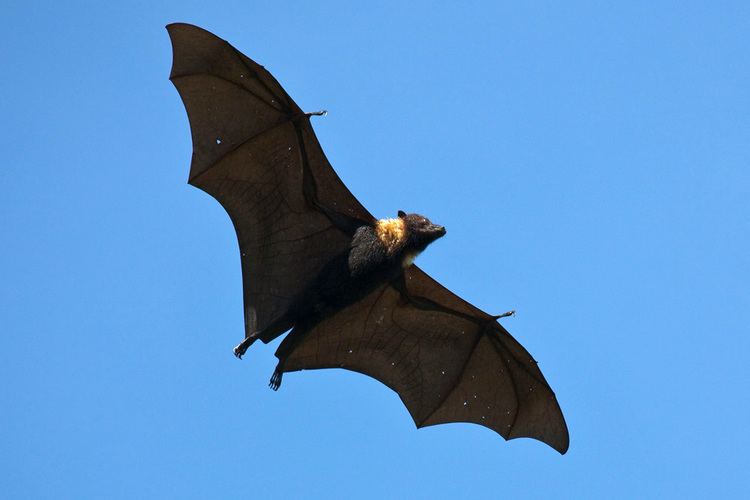 | ||
Lower classifications Large flying fox, Grey‑headed flying fox, Black flying fox, Indian flying fox, Spectacled flying fox | ||
Bat pteropus piganteus in tamil
Bats of the genus Pteropus, belonging to the megabat suborder, Megachiroptera, are the largest bats in the world. They are commonly known as the fruit bats or flying foxes among other colloquial names. They live in the tropics and subtropics of Asia (including the Indian subcontinent), Australia, East Africa, and a number of remote oceanic islands in both the Indian and Pacific Oceans. At least 60 extant species are in this genus.
Contents
- Bat pteropus piganteus in tamil
- Animal giant flying foxes safari topten world
- Status
- Physical characteristics
- Species
- In popular culture
- References
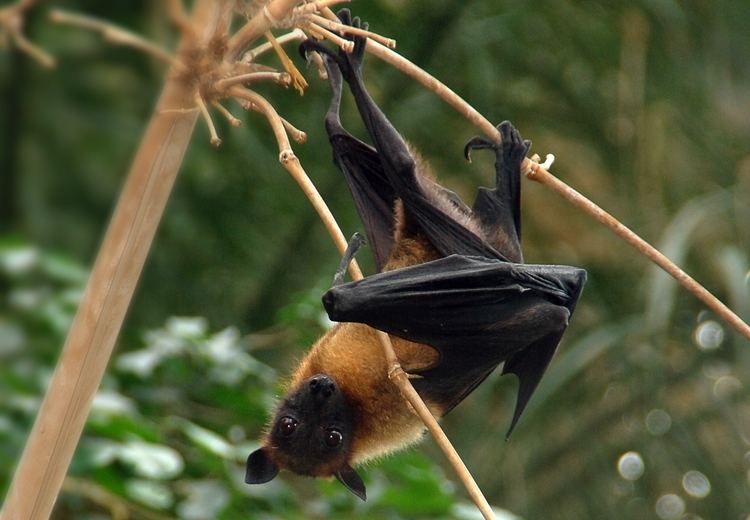
The oldest ancestors of the genus Pteropus to be unearthed appear in the fossil record almost exactly as they are today, the only notable differences being early flight adaptations such as a tail for stabilizing. The oldest megachiropteran is dated about 35 million years ago, but the preceding gap in the fossil record makes their true lineage unknown. Recent genetic studies, however, have supported the argument that Old World bats, such as Pteropus, share lineage with New World bats (those found in the Americas).

Characteristically, all species of flying foxes only feed on nectar, blossoms, pollen, and fruit, which explains their limited tropical distribution. They do not possess echolocation, a feature which helps the other suborder of bats, the microbats, locate and catch prey such as insects in midair. Instead, smell and eyesight are very well-developed in flying foxes. Feeding ranges can reach up to 40 miles. When it locates food, the flying fox "crashes" into foliage and grabs for it. It may also attempt to catch hold of a branch with its hind feet, then swing upside down; once attached and hanging, the fox draws food to its mouth with one of its hind feet or with the clawed thumbs at the top of its wings.

Animal giant flying foxes safari topten world
Status
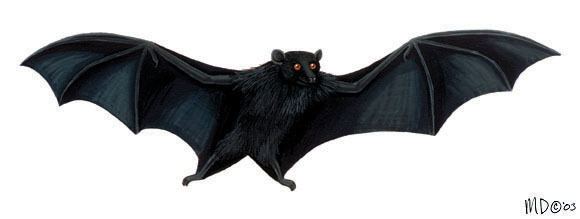
Many species are threatened today with extinction, and in particular in the Pacific, a number of species have died out as a result of overharvesting for human consumption. In the Marianas, flying fox meat is considered a delicacy, which led to a large commercial trade. Human consumption of flying fox meat in Guam is hypothesized to have led to an increase of human neurodegenerative illness. In 1989, all species of Pteropus were placed on Appendix II of CITES and at least seven on Appendix I, which restricts international trade. The subspecies P. hypomelanus maris of the Maldives is considered endangered due to limited distribution and excessive culling. The commerce in fruit bats continues either illegally or because of inadequate restrictions. Local farmers may also attack the bats because they feed in their plantations, and in some cultures, their meat is believed to cure asthma. Nonhuman predators include birds of prey, snakes, and other mammals.
The spectacled flying fox, native to Australia, is threatened by the paralysis tick, which carries paralyzing toxins.
Physical characteristics
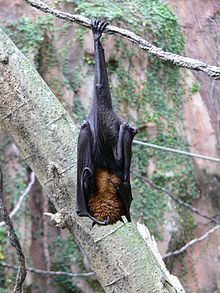
The large flying fox (P. vampyrus) is generally reported as the largest Pteropus, but a few other species may match it, at least in some measurements. The large flying fox has a wingspan up to 1.5 m (4 ft 11 in) and five individuals weighed 0.65–1.1 kg (1.4–2.4 lb). Even greater weights, up to 1.6 kg (3.5 lb) and 1.45 kg (3.2 lb), have been reported for the Indian flying fox (P. giganteus) and great flying fox (P. neohibernicus), respectively. The black-bearded flying fox (P. melanopogon) is massive and may be heavier than all other megabats, but exact weight data are not available. Comparably, no full wingspan measurements are available for the great flying fox (P. neohibernicus), but with a forearm length up to 206 mm (8.1 in), it may even surpass the large flying fox (P. vampyrus) where the forearm is up to 200 mm (7.9 in). Outside this genus, the giant golden-crowned flying fox (Acerodon jubatus) is the only bat with similar dimensions.
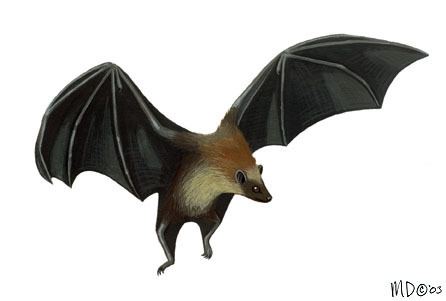
Most flying fox species are considerably smaller and generally weigh less than 600 g (21 oz). The smallest, the masked flying fox (P. personatus), Temminck's flying fox (P. temminckii), Guam flying fox (P. tokudae), and dwarf flying fox (P. woodfordi), all weigh less than 170 g (6.0 oz).
The pelage is long and silky with a dense underfur. No tail is present. As the name suggests, the head resembles that of a small fox because of the small ears and large eyes. Females have one pair of mammae located in the chest region. Ears are simple (long and pointed) with the outer margin forming an unbroken ring (a defining characteristic of megabats). The toes have sharp, curved claws.
Species
Genus Pteropus – flying foxes
In popular culture
The 1992 film FernGully: The Last Rainforest and its sequel FernGully 2: The Magical Rescue features one of its characters, Batty Koda, is a flying fox.
